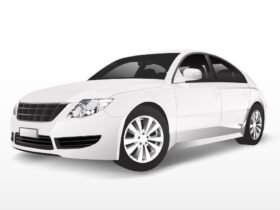Tires are an “O” shaped or a ring-shaped component that covers the rim of a wheel. The tire is mounted at the bottom of the vehicle, thereby getting power from the engine transmission and helping the vehicle to get move on the surface. Without tires, it is impossible to move a vehicle.
What are the main parts of tires?

The main parts of the tires are as follows:
- Bead– The bead is a part that holds the tire to the rim of the wheel. It is a thick hard structure at the corners of the tire or we can say at the outer surface of the tire. Usually, made of copper, brass, bronze plated high tensile steel wires into a rubber band. They prevent the tire from sliding out of place when the wheel rolls.
- Bead filler– Bead filler is a rubber compound inside the tire’s beads. It provides stability to the lower sidewall and bead area. The density and stiffness of a tire’s bead filler help to determine a tire’s performance characteristics.
- Radial Cord Body– The cord body gives the tire strength and transmits cornering forces from the tread to the wheel. Rubber coated fabric cord, called body plies, make up the cord body. Body plies can be made of polyester, rayon, or nylon. Polyester is most commonly used.
- Inner Liner– The inner liner (in the center of the tire diagram) is a rubber compound bonded to the inside of the cord body that retains air under pressure. It has no cord reinforcement, and it functions as an inner tube. Note, however, that modern car tires no longer have inner tubes inside them. A tire’s beads, bead filler, and inner liner work together to hold air within the tire walls.
- Belt Plies– Belt plies are two or more strong layers of cord just under the tread area of the tire. The primary function of belt plies is to provide strength and stability to the tire tread. They play a role in improving tire mileage, impact resistance, and traction. Steel is the most common cord material used in belt plies.
- Sidewall– The area of a tire from the bead to the tread—the side of the tire—is called the sidewall. It forms a protective covering for the cord body. Information about the tire is printed on the sidewall. This information includes the tire size, load index, and speed rating. Sidewall rubber compounds are designed to resist damage from ozone, cuts, and snags.
- Tread– The tread is the portion of the tire that comes in contact with the road surface. The tread’s compound and its design have to balance wear, traction, handling, fuel economy, resistance, and other characteristics of the tire. The tread is the first part of the tire which suffers wear and tear, also in the case when the vehicle is not running, as it has direct contact to the road surface in every season.
What is a tire made of?
The tires are usually made of natural rubbers and synthetic rubbers, fabrics, wires involving other additives like chemicals, carbon black, steel.
What a tire consists of?
Basically, a tire consists of two important things that a tire depends on. The two important things of a tire are tread and body. The tread of a tire provides continuous traction of the wheel to the surface. It has a certain number of depths which helps the tread to last long. Deeper tread lasts longer while shallow tread will not last as much long. The second thing is the body itself of a tire. The body is the whole remaining part of the body. The body provides a compartment of air to be filled with. The body may be filled with air or nitrogen depending upon the uses.
What is a clutch? How do they work? Click here for detailed working with their advantages.
What are the different types of tires?
The types and classification of a tire are not a short compilation. It is wide enough. Basically, there are two types of tires. Rubber tires and metal tires. Rubber tires are used in automotive applications like bikes, cars, trucks, buses, vans, aircraft, etc while metal tires are used in applications like locomotives, electric vehicles, railway wagons, railway shunters (All railway applications).
Classification based on uses: (Different different tires for different usage)
Summer tires: For summer use
Summer tires contain ribs and sipes. A rib is a part of the tire tread pattern created by grooves that run circumferentially around the tire. The rubber compound in summer tires has been designed to give a great efficiency only in temperatures above 7 degrees, and the winter tires cannot equal the performance of specialized summer tires once the temperature rises.
Winter tires: for winter use
Winter tire contains grooves that consist of circumferential channels between the ribs of a tire tread which enhances water evacuation. They are perfect when the climate is at sub-zero temperatures and the surfaces aren’t exactly the driest. They contain different chemical make-up compared to the summer tires which enables them to maintain their softness and hold the grip in colder environments.
All-season tires: for all seasons
All-season tire is a tire that is compatible in summer, rainy, and winter seasons. They are compatible in all season and contains the properties of a summer tire, rainy tire, and a winter tire mixed in it meaning that they are having some properties of summer tire and some properties of winter tire making a perfect economical combo. This is the reason that most economical and premium cars are ployed with all-season tires. This type of tire consists of shoulder block and block.
The shoulder block is a raised rubber compound segment on the part of the tire tread nearest the sidewall while the block is the part of the tread pattern made of raised rubber compound segments at the center tread.
The all-season tires are installed by many carmakers especially in entry-level cars and mid-range cars. They are cost-effective for these applications for carmakers which is the reason the performance tires are not OEM in case low cost and mid-range cars.
Wet weather tires: for rainy and wet uses
Rather than having a much tougher rubber substance than all-season tires, wet weather tires actually work with a softer compound compared to performance boosters. The rubber should heat up quicker in wet or cold conditions and has to have just as much mechanical traction as feasible. They’ll normally also have a lot longer siping to make an effort to disperse water from the contact area.
Performance tires: for racing, drifting , etc
Performance tires are developed for cars that were faster or for people who prefer to drive more rapidly than the typical consumer. They generally place performance and traction ahead of strength by applying a softer plastic compound. Tread block design is normally biased towards blatant grip rather than the ability to pump out water out of the way in which in a wet road. The extreme case of performance boosters is “slicks” utilized in motor racing, so-called as they have no tread whatsoever.
All-terrain tires: Mostly used for SUV’s
An all-terrain tire is designed to be versatile and give extra traction on back roads while still giving a comfortable ride on highways and when driving in the city. The all-terrain provides a practical compromise between off-road maximum traction tires and highway all-season tires. In easy words, they are useful in off-roading events and also useful on highway rides giving equal comfort to the comfort which are provided by all-season tires.
Run-flat tires: used for high-end cars
A run-flat tire is a pneumatic vehicle tire that is designed to resist the effects of deflation when punctured, and to enable the vehicle to continue to be driven at reduced speeds – under 56 mph – and for limited distances – generally between 10 mi to 50 mi, depending on the type of tire and cost.
Flat run tires are tires that can be driven on even when they are punctured and no longer holding air. The main advantage is that when you do get a puncture, you don’t need to swap a spare wheel onto the car before you can proceed.
Eco tires: used for any cars
They are designed for general customers. These tires are good for everyday usage, highway driving, and a little exposure to limited off-roading. They won’t be a problem if they aren’t pushed beyond their limits. They are cheaper than all the tires. It contains basic properties that make it useful for daily driving.
4×4 tires: Offroad tires
Off-road tires are a category of vehicle tires that use deep tread to provide more traction on unpaved surfaces such as loose dirt, mud, sand, or gravel. Compared to ice or snow tires, they lack studs but contain deeper and wider grooves meant to help the tread sink into mud or gravel surfaces. They provide great momentum and does not lack traction when driven mud condition.
Articles you must read: Hybrid Cars: Advantages and disadvantages
Classification based on the type of rubber tires:
Cross-ply tires
Cross-ply tires have fibers of nylon layered in a diagonal manner to provide high side-wall stability to the tires. These tires are used where there is heavy loading. You will see this kind of tires mostly in trucks and loaders.
Tubeless radial tires
These tires are pneumatic tires that do not need a separate inner tube. They have continuous ribs molded integrally into the bead of the tire so that they are forced pressure of the air inside the tire to seal with the flanges of the metal rim of the wheel. They reduce weight, they are cooler while running, also they can capture a nail during a puncture while the tire is running in its thick layer. While puncture repair they do not need to remove the tire body, a puncture is repaired from outside the surface of the body and is an easy task.
Tube radial tires:
Tubed tires consist of an outer body and an inner tube. The outer body needs to be thick in order to prevent any damage to the inner tube and the inner tube has to be soft and flexible so that it can be installed and uninstalled( changing of a tube) easier. Also, a softer tube will allow more air to it. In the case of a puncture, the air tube loses air instantly. While repairing a puncture, unlike in the case of tubeless tires the repair work is carried outside the body, here one has to take the inner tube out of the body, and then the repair work is carried out.
Classification based on applications of rubber tires:
Under this major category of tires includes-
Commercial truck tires:
These are the heaviest rubber tires of all categories. They are designed to handle a tonne of loads. They can be seen on big trucks, cement mixer trucks, etc. They are used in large applications.
Commercial Light truck tires:
The light truck tires are used on light trucks which are smaller than larger commercial trucks. Although they are also designed to handle a load of about 1 ton or larger depending upon the application. They last longer than commercial truck tires as they handle low loads per mile.
Light truck tires:
Tires can be seen on some light pickups and tempo which is used to move load from point A to point B. They are skinny tires as compared to commercial light truck tires.
Light truck tires include-
All-season luxury crossover and SUV tires:
High-performance tires with properties to withstand any type of season. They are equipped by car manufacturers in high-end and luxury cars and SUVs.
All-Terrain light truck and SUV tires:
Designed to run over any type of terrain and surfaces and withstand any type of season.
Highway- terrain light truck and SUV tires:
Tires that are designed to last longer on the highway. Also called mile muncher. Useful for maximum highway usage.
Mud-Terrain light truck and SUV tires:
Tires with extra deep treads, and fat body. The extra-deep treads will help to increase traction control to the road surface. These basic properties will not keep the vehicle stuck in any type of mud terrain condition for light trucks and SUVs.
Passenger car tires:
The tires which are designed for cars, SUVs, hatchbacks, sedans are known as passenger car tires.
Passenger car tires include-
All-season tires:
They are the best combo of summer rainy and winter season tires as they contain properties to withstand every season. They are cheaper than performance tires, this is the reason that the car and bike manufacturers install this type of tires in the factory underproduction of vehicles.
High-performance tire:
High-performance tires are summer tires, winter tires, rainy tires with more advanced properties to withstand the respective season. Also, some high-performance tires are used for racing, drifting, etc.
Ultra high-performance tire:
Same as high-performance tires but with more advanced properties to withstand rough driving, stunts. They are installed on racing cars, high-performance cars, SUVs, racing bikes.
Ultra high-performance SUV tire:
Used for performing stunts such as burnout and used for racing, these are the costliest tires used for SUVs. Also, they are used under the heaviest off-roading events when the vehicle is in the mountains. They are designed to withstand the wear and tear event and contain properties that will have less wear and tear.
Special trailer tire:
Special Trailer tires are designed for your trailer’s requirements. Their stiff sidewalls help prevent your rig from swaying. Their heavy-duty load capacity is critical. Special trailer tires have 10% more load capacity than equivalent light truck tires and 40% more than passenger car tires. They are designed for trailer wheels, typically narrower than those on a car, and have shallower treads so they wiggle less to help improve your tow vehicle’s fuel economy and run cooler.
Viewers also read 7 tire maintenance tips no one should ignore.









